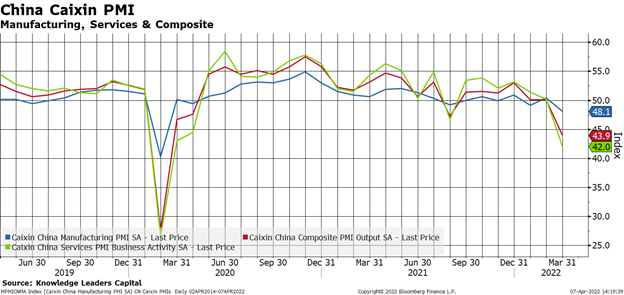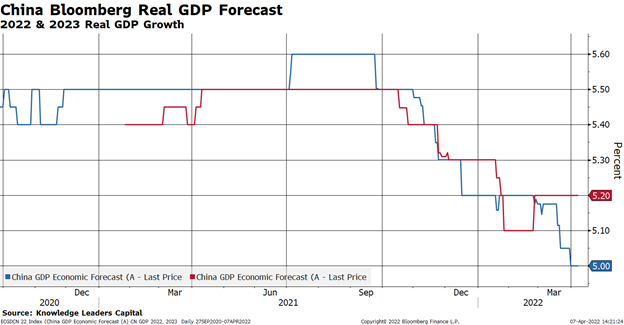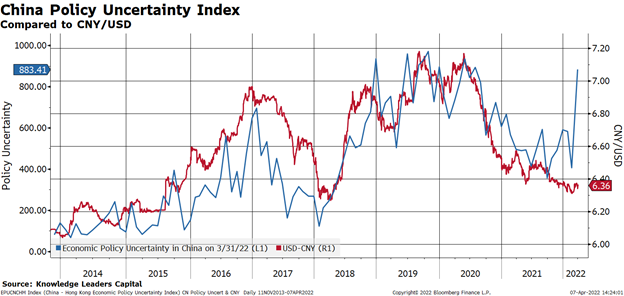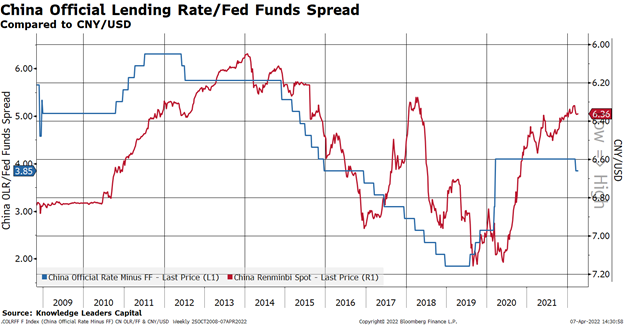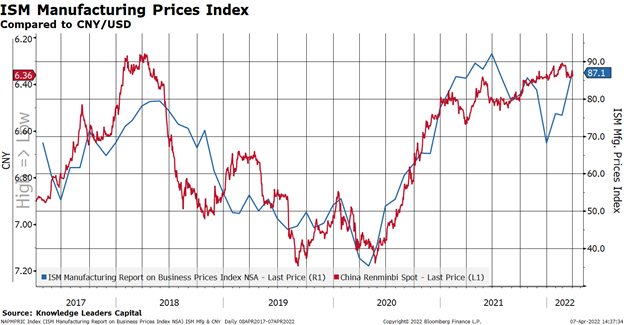For a confluence of reasons ranging from COVID to property sector problems, China has been experiencing slower growth. Many cross-asset relationships suggest that a devaluation in China could help spur growth. Whether this will happen is another story, but if the Chinese Yuan began a gradual decline, it would help alleviate inflationary pressures like it has done in the past.
Last week we got a glimpse of the China Caixin PMIs—both manufacturing and services. The slowdown is apparent.
For months now, analysts have been marking down real GDP estimates for 2022. As things stand now, the Bloomberg consensus for 2022 real GDP growth is 5%, down over 0.5% from September 2021.
One of the factors contributing to China’s slowdown is President Xi’s push for a more shared prosperity, interfering in the activities of companies across many industries. This has understandably led to a surge in China’s Economic Policy Uncertainty index. The level of the index is associated with a CNY/USD around 7.0.
As yesterday’s Fed minutes showed, the committee is about to embark on a very aggressive tightening cycle, on par with 1994. By the end of this year, market expectations are for policy rates to be about 2.4% as of this writing. If China holds rates through year-end–which isn’t a foregone conclusion as policy makers last night were reportedly discussing a 10-15bps cut to the official lending rate—then the spread between fed funds and China’s policy rate will narrow to less than 2%. This would suggest a Chinese yuan well below 7.0.
Moves in the CNY tend to have fairly rapid impacts on manufacturing prices, and the CNY holding at such an elevated level is keeping inflationary pressures high in the US. A turn down in the CNY would quickly start to erode price levels.
While the market is testing the mettle of the Bank of Japan’s yield curve control, leading to a rapidly weakening Yen, the market is not pressing the Yuan yet. Given China is experiencing a policy divergence similar to Japan, it is possible speculators turn their attention next to the CNY.
Image and article originally from www.knowledgeleaderscapital.com. Read the original article here.

